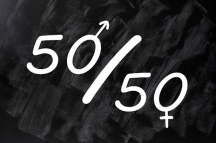The following quiz has been created to ignite a teachers thought processes in relation to the topics of gender and diversity in the classroom. As well as highlight some key terms and strategies that can assist with managing these issues.
Question 1.
The concept of a hidden curriculum is:
a. The parts of the Australian Curriculum that a teacher hides in their desk.
b. The parts of the Australian curriculum that are hard to find in the ACARA website.
c. What the students learn without the teacher’s knowledge or intention.
Question 2.
Stereotyping can be defined as:
a. A generalisation, usually exaggerated or oversimplified and often offensive, that is used to describe or distinguish a group.
b. Choosing the best brand of stereo to purchase.
c. Favouring one area of diversity over another.
Question 3.
In the classroom diversity should be:
a. Left alone, there is no point causing a fuss over nothing.
b. Inclusive, understood and incorporated into the curriculum.
c. Only discussed if an issue arises.
Question 4.
The concept of the enacted curriculum can be defined as:
a. The teacher’s interpretation of not only the official curriculum document, but also how the teacher interprets and understands the students in their classroom.
b. What the teacher intends to teach as part of the Australian curriculum.
c. Parts of the curriculum which require the teacher to act out a scenario.
Question 5.
An example of a gender stereotype would be:
a. Referring to professions as police officer, chairperson, cash assistant.
b. Stipulating that blue is for boys and pink is for girls.
c. Acknowledging that women can be astronauts and men can be nurses.
Question 6.
Equal opportunity in the classroom would allow:
a. Only the strong boys to move the furniture.
b. Only the strong boys and the strong girls to move the furniture.
c. Anyone can move the furniture.
Question 7.
Diversity can be recognised in:
a. Culture only.
b. Gender, ability, sexuality, socio-economics, religion and beliefs as well as culture
c. The dictionary.
Question 8.
Teaching strategies to eliminate gender bias can include:
a. Separate the boys and girls into gender groups.
b. Use gender-free language.
c. Teach at an all-girls or all-boys school.
Question 9.
The Australian Curriculum is:
a. A rigid document that must be adhered to.
b. Not to be contested.
c. Open to interpretation and implementation.


